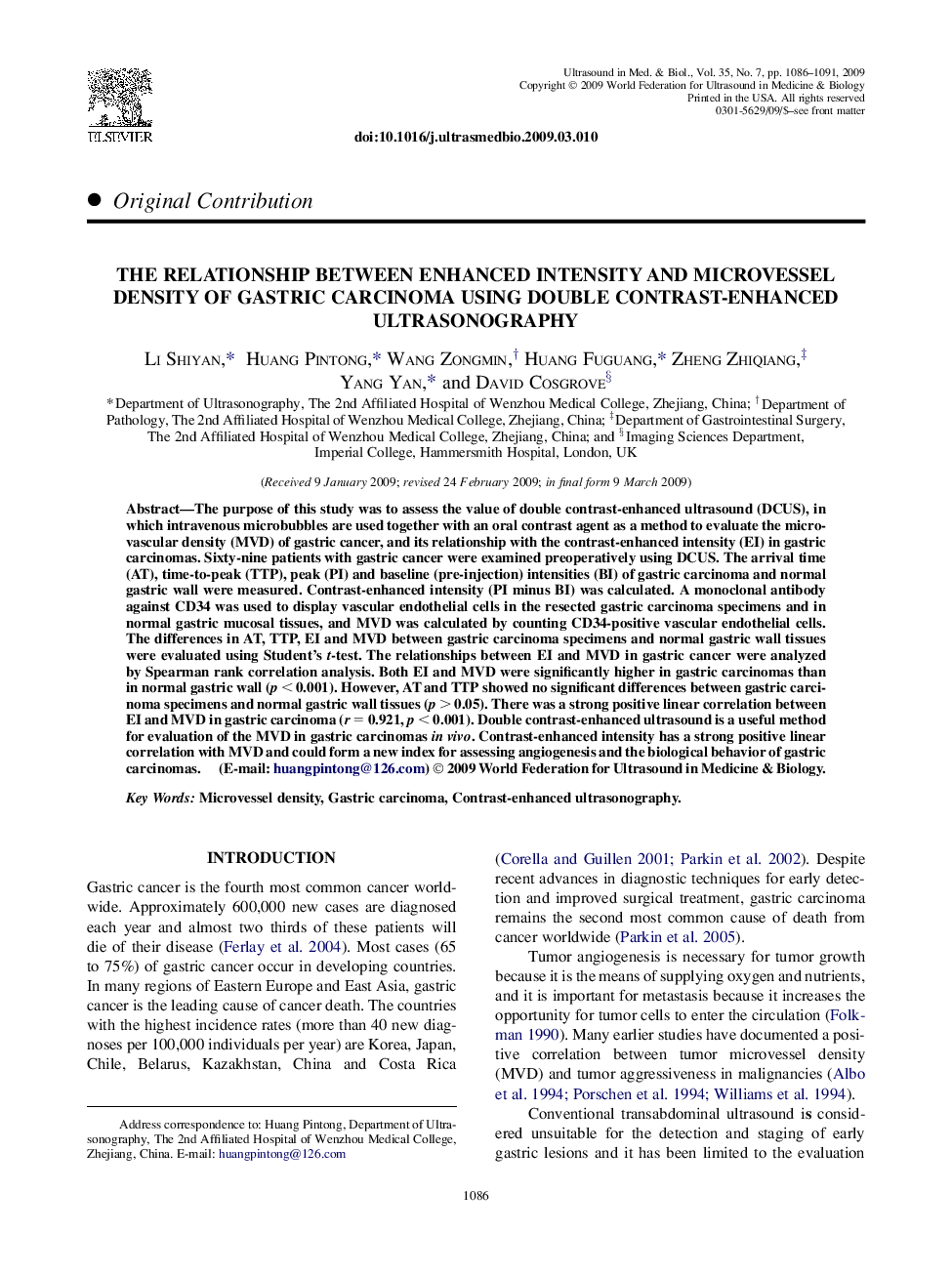| Article ID | Journal | Published Year | Pages | File Type |
|---|---|---|---|---|
| 1762331 | Ultrasound in Medicine & Biology | 2009 | 6 Pages |
Abstract
The purpose of this study was to assess the value of double contrast-enhanced ultrasound (DCUS), in which intravenous microbubbles are used together with an oral contrast agent as a method to evaluate the microvascular density (MVD) of gastric cancer, and its relationship with the contrast-enhanced intensity (EI) in gastric carcinomas. Sixty-nine patients with gastric cancer were examined preoperatively using DCUS. The arrival time (AT), time-to-peak (TTP), peak (PI) and baseline (pre-injection) intensities (BI) of gastric carcinoma and normal gastric wall were measured. Contrast-enhanced intensity (PI minus BI) was calculated. A monoclonal antibody against CD34 was used to display vascular endothelial cells in the resected gastric carcinoma specimens and in normal gastric mucosal tissues, and MVD was calculated by counting CD34-positive vascular endothelial cells. The differences in AT, TTP, EI and MVD between gastric carcinoma specimens and normal gastric wall tissues were evaluated using Student's t-test. The relationships between EI and MVD in gastric cancer were analyzed by Spearman rank correlation analysis. Both EI and MVD were significantly higher in gastric carcinomas than in normal gastric wall (p < 0.001). However, AT and TTP showed no significant differences between gastric carcinoma specimens and normal gastric wall tissues (p > 0.05). There was a strong positive linear correlation between EI and MVD in gastric carcinoma (r = 0.921, p < 0.001). Double contrast-enhanced ultrasound is a useful method for evaluation of the MVD in gastric carcinomas in vivo. Contrast-enhanced intensity has a strong positive linear correlation with MVD and could form a new index for assessing angiogenesis and the biological behavior of gastric carcinomas. (E-mail: huangpintong@126.com)
Related Topics
Physical Sciences and Engineering
Physics and Astronomy
Acoustics and Ultrasonics
Authors
Li Shiyan, Huang Pintong, Wang Zongmin, Huang Fuguang, Zheng Zhiqiang, Yang Yan, David Cosgrove,
